Sealife guideThe California spiny lobsterPanulirus interruptus
Last updated on 03/07/2025 at 11:54 PM
Taxonomy
- Common name: California spiny lobster, red lobster
- French name: Langouste mexicaine, langouste de Californie
- Scientific name: Panulirus interruptus (Randall, 1840)
- Family name: Panuliridae
- Order name: Decapoda
- Class name: The crustaceans [Malacostraca]
Description
The California spiny lobster has an elongated body and a hard exoskeleton, usually brown in color with yellow or orange patterns. It is distinguished by its long, spiny antennae which play a crucial role in its movement and in detecting surrounding objects.
Geographic range
The California spiny lobster inhabits the temperate waters along the eastern coast of the Pacific ocean, particularly those of California and the Gulf of California. It is also found around the islands of Baja California and the Sea of Cortez.
Habitat
The California spiny lobster is primarily found on rocky bottoms and coral reefs between 16 and 213 feet deep, where it can hide in crevices or caves to protect itself from predators.
Diet
The California lobster feeds on benthic invertebrates and
mollusks.
Unlike lobsters, they do not have claws, which makes them more vulnerable to predators.
Reproduction
The reproduction of the California spiny lobster is sexual, with a breeding season typically extending from spring to fall. Females carry their eggs under their abdomen until they hatch. The young larvae go through several developmental stages before settling on the seafloor and metamorphosing into adults.
Did you know ?
The California lobster is of great importance to commercial fishing, particularly in California, where it is a major food resource. The fishing of California lobsters is strictly regulated to ensure the sustainability of the population, with limited fishing seasons, especially to avoid reproduction periods and minimum capture sizes to preserve the development of young lobster generations.
Within the same genus
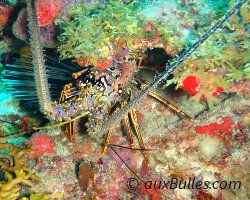
Caribbean spiny lobster
(Panulirus argus)

Japanese crayfish
(Panulirus japonicus)
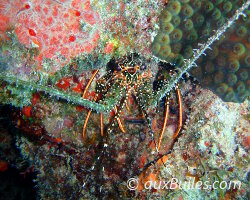
Spotted spiny lobster
(Panulirus guttatus)
Within the same family
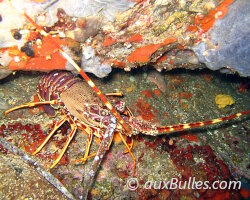
European spiny lobster
(Palinurus elephas)
Discover also

Bowed fiddler crab
(Uca arcuata)
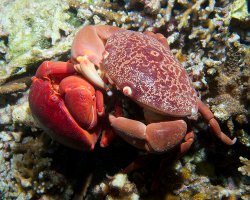
Convex crab
(Carpilius convexus)
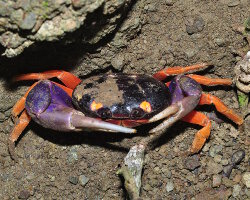
Halloween crab
(Gecarcinus quadratus)
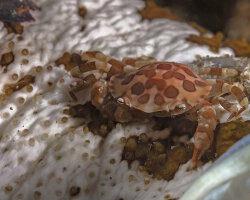
Harlequin crab
(Lissocarcinus orbicularis)
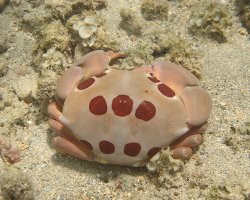
Seven-eleven crab
(Carpilius maculatus)
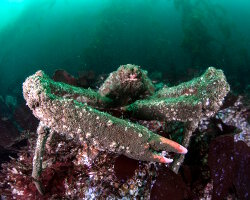
Sheep crab
(Loxorhynchus grandis)

Spotted cleaning shrimp
(Periclimenes yucatanicus)
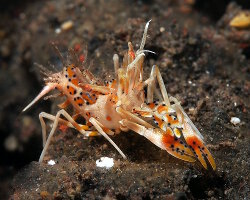
Tiger shrimp
(Phyllognathia ceratophthalma)
The marine species from eastern Pacific ocean

California sheephead
(Bodianus pulcher)
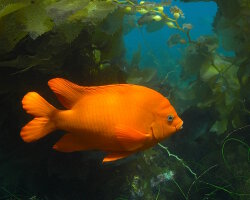
Garibaldi
(Hypsypops rubicundus)
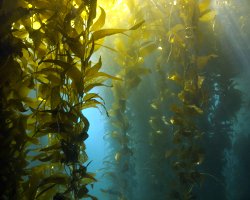
Giant kelp
(Macrocystis pyrifera)
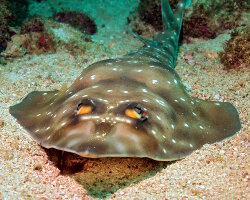
Gorgona guitarfish
(Pseudobatos prahli)
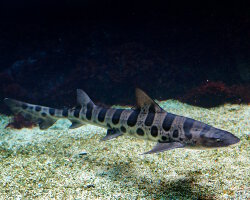
Leopard shark
(Triakis semifasciata)

Mexican hogfish
(Bodianus diplotaenia)

Sheep crab
(Loxorhynchus grandis)
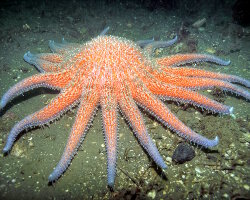
Sunflower sea star
(Pycnopodia helianthoides)
Our latestUpdates

Friday, December 19th 2025
The magic of Christmas decorations
Discover Christmas decorations in Florida: giant trees, illuminated palm trees, magical light displays and tropical settings to experience the holiday magic under the sun.

Monday, December 15th 2025
The dusky shark
Discover the dusky shark, one of the world's largest coastal sharks, and learn why this powerful predator is essential to marine ecosystems.

Friday, December 12th 2025
Christmas magic at Disney hotels
Experience the magic of Christmas at Disney hotels: enchanting decorations, giant Christmas trees, dazzling lights and a festive holiday atmosphere.
Photo of the Day
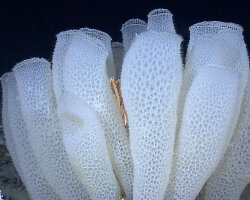
Corbeille de Vénus
(Euplectella aspergillum)

























